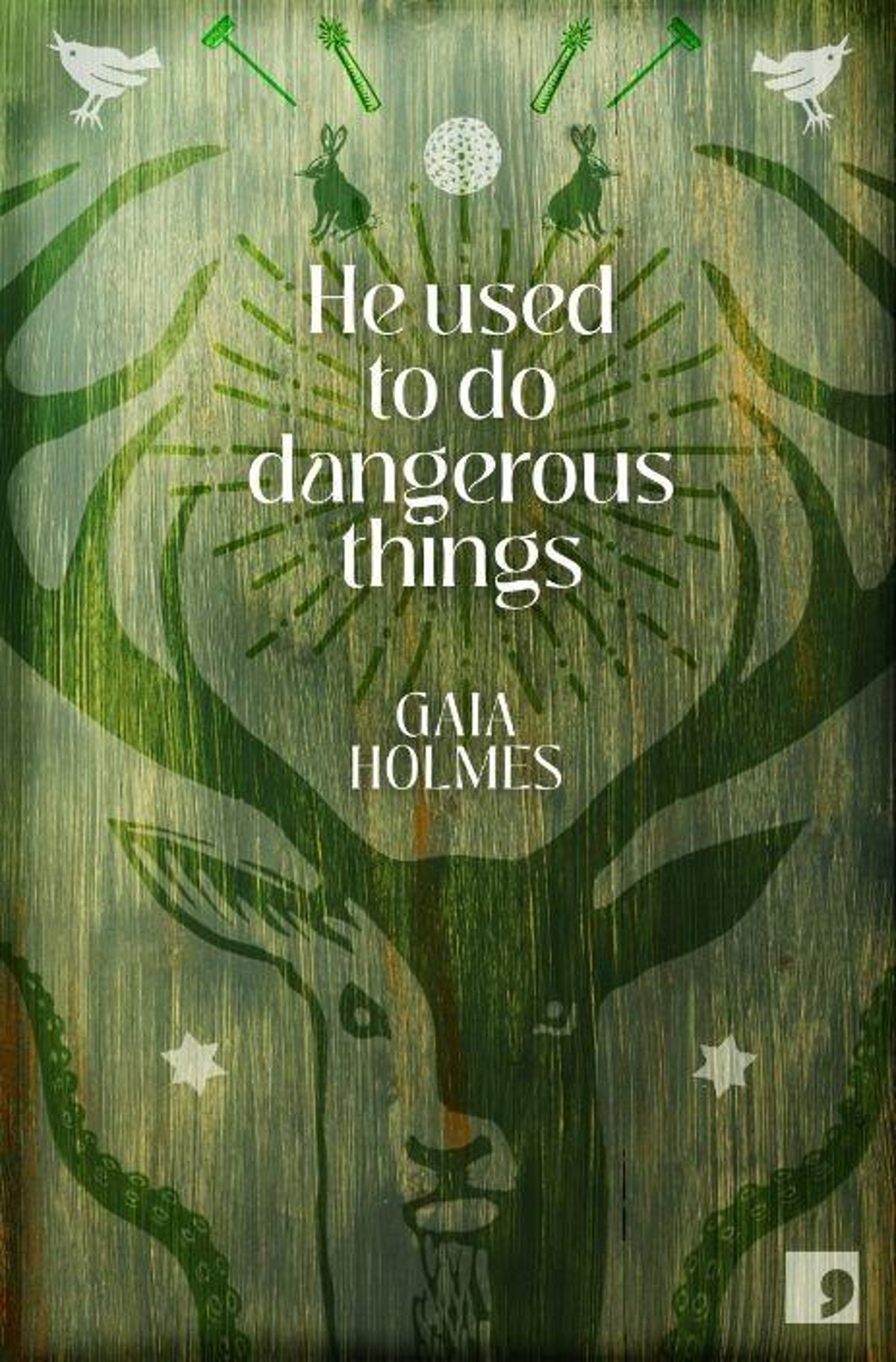A poet’s inventive and unusual debut short fiction collection

Gaia Holmes | He Used to Do Dangerous Things | Comma Press: £10.99
Reviewed by Anna O’Boyle
Gaia Holmes’ He Used to Do Dangerous Things secures Holmes’ move from poetry to short fiction as a success. The collection presents an original, intriguing, and often surprising assemblage of short stories, frequently exploring the after-effects of an undisclosed or obscured trauma. To exciting and innovative effect, Holmes produces a text that simultaneously maintains a social realist impulse yet gains a compulsive and experimental momentum as its nineteen stories progress. Holmes’ familiarity, through her previous poetry collections, with the importance of sequential ordering and careful consideration of the positional relationship between images, renders He Used to Do Dangerous Things a distinctly accomplished collection. This is a work that understands the collected form, utilising its capacity for thematic linkage, its ability, through aggregation and enmeshment, to escalate and centralise the significance of smaller, more suburban moments. He Used to Do Dangerous Things gets stronger as it goes on, and it starts with a story itself fairly powerful.
The collection’s first piece, ‘He Used to Do Dangerous Things’ depicts the aftermath of a husband’s accidental death. By delaying insight into the circumstances of his passing, the story centralises the emotional reverberations of grief before coming to foreground Holmes’ recurrent and imaginative rethinking of the interactions between human and animal. The story, as the whole collection, strays from a prescriptive understanding of realism, considering the phantasmagorical thinking of grief and a dream-like porosity between the boundaries of human and non-human. Yet Holmes situates this experimentalism within a reality that becomes shameful, embarrassing in its pitiful, undignified mundanity. The story, like many in the collection, leaves its reader with a complex mixture of bathetic sympathy and mysterious intrigue. Holmes shapes nondescript reality into surrealism; as in her poetry the banal settings of motorways, basement flats and electricity cupboards become vital landscapes within which scenes of alchemical human connection, dark malevolence and an uncanny affectivity between human and more-than-human play out. Talking stags, resurrected goldfish and squatters with urban legend like powers of invasion contribute to the collections muted, uncertain magical realism. And yet Holmes is also exploring the destabilisation of thought that mental illness, past trauma, and pandemic induced isolation can produce. We are never quite sure if we believe the magic. ‘He Used to Do Dangerous Things’ ends with ambiguity; Martha is not the most reliable narrator.
Holmes’ characters are odd, irrational and alone, but their stories are told with such empathy and understanding that their strangeness becomes warm and their desire for connection achingly familiar. He Used to Do Dangerous Things inscribes a sympathetic power to those robbed of it. ‘Unloved Flowers’, one of the longer stories, details the union of a marginalised people and a marginalised wilderness under threat of redevelopment. It ends to imply an environmental power that reasserts itself through the bodies of humans deprived of their own authority. ‘Universal Stain Remover’, another of the longer stories, and one of several that deal with domestic violence, similarly redistributes uneven power relations, allowing an abused woman to reposition her abuser, leaving him dependent on her mercy. A strange, satiated pleasure rises at the prospect of her revenge.
‘Universal Stain Remover’ portrays an outsider experience with a dignity, nuance and lyricism that recurs in ‘Surge’, Holmes’ anxious and claustrophobic portrayal of pandemic trauma, and one of the collection’s most poignant and emotionally stirring pieces. ‘Surge’ describes an elderly man, alone in lockdown, who finds solace in the moving lights of an electricity cupboard. As in many of the stories irrational thinking accompanies loneliness, but it is the irrationality Covid brought on us all; we recognise the fears of arrest walking supermarket aisles, the talking to kettles and listening through walls in search of human contact. The presence of the stranger becomes, throughout the collection, a valuable opportunity to establish intimacy and respect. Connection and interdependence, whether between the stories in a collected form, the characters within such stories or the affective connection between reader, character and writer provides Holmes’ writing with vitality, depth and formal complexity. It becomes hard to withdraw from that connection, to stop reading.
This formal complexity is further explored in the collection’s last few stories, where the experimentalism present throughout He Used to Do Dangerous Things becomes explicit. These stories are darker, shorter and somehow more compulsive; we are searching for the warmth of connection Holmes has earlier established. It seems harder to find. Written with Gordon Kitchen, ‘The Basement’ borrows the tropes of horror to describe the onset of squatters, but, given the ambiguous relationship to reality previously presented, the possibility that Holmes is detailing the onset of a degenerative illness lingers. The collections final page explains Kitchen later died of cancer. It is one of the more unresolved stories of the collection, and this irresolution sustains those that follow. ‘Naming Things’ is a page long story structured around lists of names for future children and potential pets. Neither pet nor child materialises in the story and the barrage of unused names becomes a haunting reflection on the narrator’s loneliness. ‘The Old Year’ personifies the past, out of a Father-Christmas-like sack he produces hurricanes, murders and bent politicians, but also August sunshine, healthy babies and human kindness. The year leaves, but we do not know where he goes. Holmes ends with an open web of possibility, collaboratively encouraging the reader to determine their own resolution.
He Used to Do Dangerous Things is a compelling, unusual and imaginative collection that twists its way through darkness, malevolence, warmth and connection. Holmes showcases the rich multiplicity the short story collection is capable of conveying. She provides few answers, but so much to think about, to question. Readers are left with the feeling reality is always far stranger, far less solid, than it may at first seem.
Reviewed by Anna O’Boyle
